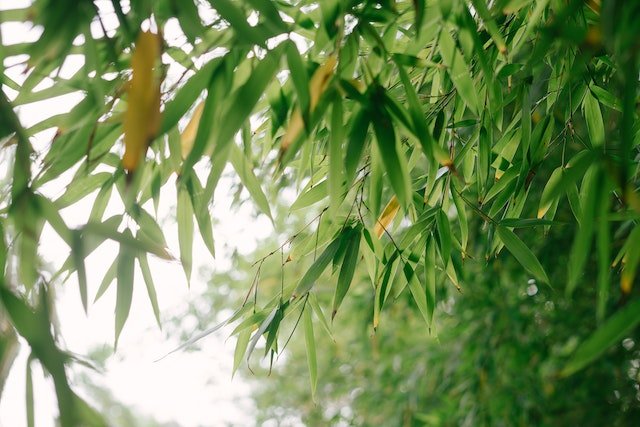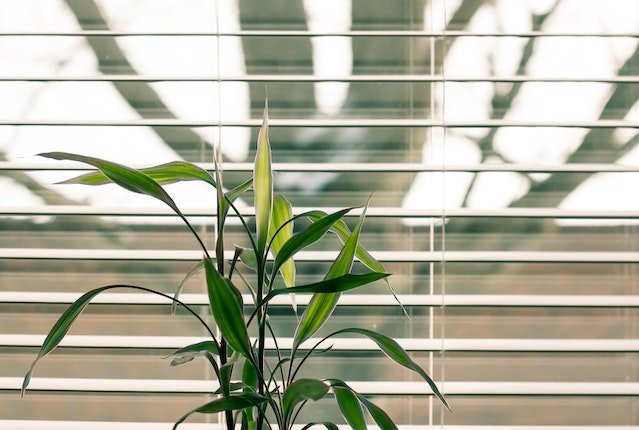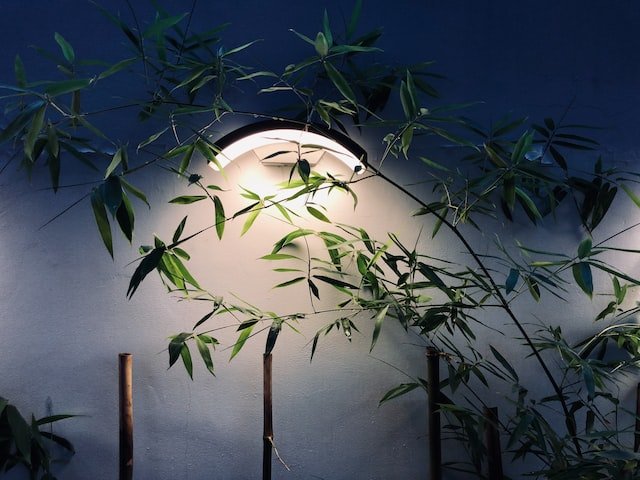How To Prevent Bamboo Plants From Spreading Uncontrollably

0Shares
Bamboo plants may be just what you need to add an exotic flair to your landscape! These versatile plants offer a wealth of benefits, including creating privacy screens and serving as a source of building materials. However, if not adequately managed, bamboo plants can quickly spiral out of control and take over your landscape. That’s why it’s crucial to prevent bamboo plants from spreading uncontrollably.
In this article, we’ll delve into some of the most effective methods to keep your bamboo plants in check and ensure they stay where you want them to. From installing physical barriers to regular maintenance and pruning, we’ll cover all the bases to help you keep your bamboo under control. So, whether you’re a seasoned landscaper or a first-time bamboo grower, read on to discover how to prevent bamboo plants from spreading uncontrollably and maintain a beautiful and manageable landscape.
Are Bamboo Plants Hard To Control From Spreading?
 Photo by Oleksandr Pidvalnyi
Photo by Oleksandr Pidvalnyi
Bamboo plants, with their rapid growth and underground rhizomes, can be a force to be reckoned with. However, controlling their spread requires determination and a strategy that’s up to the task. So, are bamboo plants hard to prevent from spreading? The short answer is yes, but fear not, for there are ways to manage these beautiful and versatile plants.
Regular pruning and maintenance are also crucial in keeping bamboo plants in check. Removing new shoots outside the designated area and trimming the plant prevents the bamboo from reaching the skies and maintains a more manageable size.
Now, it’s worth noting that bamboo management is not for the lazy or faint of heart. On the contrary, it requires a persistent and dedicated approach to keep the plants under control. But with the proper techniques and attitude, you can prevent these formidable plants from spreading uncontrollably and reap the rewards of their beauty and versatility.
Understanding the Characteristics of Bamboo
Bamboo is a super plant that belongs to the grass family. But it’s not just any ordinary plant – it’s known for its incredible speed, strength, and adaptability. Here are some of the fantastic qualities that make bamboo a true wonder of nature:

🟫 Lightning-fast Growth
Bamboo is the Usain Bolt of the plant world. Under ideal conditions, it can grow up to 91 cm (3 feet) per day! This lightning-fast growth makes bamboo perfect for reforestation projects and as a sustainable building material.
🟫 A Rhizome Network
Bamboo spreads through an underground network of rhizomes, like secret tunnels for the plant. These horizontal underground stems produce new shoots and roots, allowing bamboo to create new clumps far away from its original parent.
🟫 Clumping Vs. Running
There are two types of bamboo: clumping and running. Clumping bamboo grows in tight, dense clusters and spreads slowly, making it a good choice for landscaping and garden use. Running bamboo, however, is more aggressive and can spread rapidly, making it a bit of a wild child.
🟫 Hardy and Adaptable
Bamboo is a tough cookie that can thrive in various conditions, from steamy tropical climates to cold temperate regions. It’s versatile regarding soil types and can tolerate drought and flooding like a champ.
🟫 Strength and Durability
Bamboo is a real-life superhero when it comes to strength and durability. Its high tensile strength makes it an excellent choice for building bridges, scaffolding, and houses. Talk about being built like a tank!
🟫 Eco-Friendly
Bamboo is not only super cool, but it’s also environmentally friendly. It proliferates and requires minimal resources to cultivate, which means it’s a sustainable material. Additionally, bamboo can absorb large amounts of carbon dioxide, making it a vital tool in the fight against climate change.
Common Reasons Why Bamboo Plants Spread Uncontrollably

There are a few reasons why bamboo plants may spread uncontrollably:
🟫 Lack of proper containment
Bamboo can spread if it is not contained correctly. If you are growing bamboo in your yard or garden, it is vital to install a barrier around the perimeter of the planting area to prevent the rhizomes (underground stems) from spreading too far.
🟫 Invasive species
Some species of bamboo are considered invasive, which means they have the potential to spread quickly and aggressively in non-native environments. If you are planting bamboo, choose a species that is not invasive in your area.
🟫 Climate and growing conditions
Bamboo grows best in warm, humid climates with plenty of rainfall. However, if you live in an area with dry or cold weather, the bamboo may not grow as quickly or spread as easily.
🟫 Lack of maintenance
Bamboo requires regular maintenance to keep it from spreading too quickly. This includes regularly pruning and thinning out the plants to keep them under control.
🟫 Soil conditions
Bamboo can grow in various soil conditions but prefers well-drained soil with plenty of organic matter. If the soil is too compacted or lacks nutrients, the bamboo may not grow as quickly or spread as easily.
🟫 Nutrient availability
Bamboo is a fast-growing plant that requires a lot of nutrients to thrive. If the soil is depleted of nutrients, the bamboo may spread more aggressively to find the resources it needs to survive.
🟫 Water availability
Bamboo requires a lot of water to grow, especially during the early stages of growth. The bamboo may spread more aggressively to find water if the soil is dry or lacks rainfall.
🟫 Lack of understanding of bamboo growth habits
Bamboo is a unique plant that grows differently than most other plants. It is important to understand the growth habits of bamboo, such as how it spreads through underground rhizomes, to contain it properly.
🟫 Human intervention
Human activity can also contribute to the uncontrollable spread of bamboo. For example, if the bamboo is disturbed during construction or landscaping activities, it may spread quickly.
🟫 Lack of awareness of the potential for bamboo to spread
Many people are not aware of the potential for bamboo to spread uncontrollably and may plant it without realizing the potential consequences. It is important to research and understand the growth habits of any plant before planting it in your yard or garden.
Importance Of Preventing Bamboo Plants From Spreading Uncontrollably
Bamboo plants’ graceful beauty and versatility have become increasingly popular in modern landscapes. However, they can be a double-edged sword, spreading uncontrollably and causing damage if not properly managed. Here are some reasons why it’s crucial to prevent bamboo plants from spreading uncontrollably and how to do it:
🟫 Mitigating Property Damage
Bamboo plants’ aggressive growth can wreak havoc on nearby property, damaging structures, pathways, and utilities. This can lead to costly repairs and disruptions to daily life. By implementing proper management techniques, such as installing rhizome barriers and pruning regularly, you can prevent bamboo plants from spreading uncontrollably and causing damage.
🟫 Curbing Invasive Species
Some species of bamboo, such as Golden Bamboo and Black Bamboo, are invasive and can negatively impact local ecosystems. They can outcompete native plants and disrupt the balance of the ecosystem, leading to long-term consequences. Controlling the spread of these invasive bamboo species is essential to preserving the biodiversity of local habitats.
🟫 Enhancing Safety Measures
Bamboo plants can grow tall and dense, posing a safety hazard to nearby structures and power lines. If left unchecked, the weight of the plant can cause it to topple, damaging property and endangering people. By pruning regularly and planting bamboo safely from structures, you can mitigate the risk of injury and damage.
🟫 Aesthetic Appeal
While bamboo plants can be stunning, an overgrown and unkempt bamboo plant can be an eyesore. Proper management techniques, such as trimming and pruning, can help maintain the beauty of your bamboo plant and prevent it from becoming unattractive.
Remember to monitor your bamboo plant regularly, know when to take action, and be persistent in your management efforts.
Choosing the Right Bamboo Plant

Knowing which bamboo plant to select for your needs can be overwhelming with so many species. Fear not – we’ve got you covered! Here are some tips to help you choose the perfect bamboo plant:
🟫 Determine Your Needs
The first step in selecting the right bamboo plant is determining your needs. Are you looking for an ornamental plant to add visual interest to your garden? Do you want bamboo species ideal for creating a privacy screen or windbreak? Are you planning to use bamboo as a sustainable building material? Once you know what you’re looking for, you can narrow your options.
🟫 Research the Species
Once you’ve determined your needs, it’s time to start researching the available bamboo species. Bamboo plants come in many different sizes, shapes, and colors. Some species are more tolerant of drought or flooding, while others are better suited to certain soil types or climates. Take the time to read up on the species you’re interested in to ensure it will thrive in your area.
🟫 Consider the Growth Rate
Bamboo is known for its rapid growth, but some species grow faster than others. Choose a fast-growing species like Moso bamboo if you want a bamboo plant that provides shade or privacy quickly. However, keep in mind that fast-growing species may require more maintenance to keep them under control. If you want a plant that will stay relatively compact, choose a slower-growing species like Dwarf bamboo.
🟫 Check Hardiness
Depending on where you live, you may need to choose a bamboo species that can withstand harsh winter conditions. Check the hardiness rating of the species you’re interested in to ensure it can survive in your climate. Some bamboo species, like Golden bamboo, are more cold-hardy than others and can even tolerate temperatures as low as -15°F (-26°C)!
🟫 Visit a Nursery
If you still need to decide which bamboo plant to choose, visit a local nursery specializing in bamboo. They can provide expert advice on selecting the right species for your needs and help with planting and care. Visiting a nursery is also a great way to see different bamboo species up close and get a feel for how they look and grow.
Choosing the right bamboo plant involves determining your needs, researching the different species, considering growth rate and hardiness, and seeking expert advice. With the right bamboo plant, you can enjoy this amazing plant’s beauty, sustainability, and versatility for years to come!
Factors to Consider Before Planting a Bamboo
Here are some factors to consider before planting bamboo:
🟫 Climate
Bamboo is a resilient plant that can grow in various climates. However, it thrives in warm and humid conditions, making it an ideal option for tropical and subtropical regions. If you live in a colder climate, don’t worry! There are also cold-hardy species of bamboo that can survive in temperatures as low as -20°F. So, before planting bamboo, make sure to research the species that are best suited for your local climate.
🟫 Soil
Good soil is essential for healthy bamboo growth. Bamboo prefers well-draining soil rich in organic matter, so it’s important to ensure that your soil meets these requirements. You can test your soil by conducting a soil analysis to help you determine the pH level and nutrient content. This information will help determine whether you must amend your soil before planting bamboo.
🟫 Sunlight
Bamboo loves sunshine! It needs at least six hours of direct sunlight per day to grow. Make sure to choose a spot that receives plenty of sun. If you have a shaded area, consider planting a shade-tolerant bamboo species.
🟫 Water
Like all plants, bamboo needs water to thrive. It requires regular watering, especially during the first few years of growth. Make sure to choose a spot that has access to water. If you live in a drier climate, you may need to irrigate your bamboo regularly to keep it hydrated.
🟫 Spacing
Bamboo can spread quickly, so it’s important to plant it in an area that won’t become invasive. Plant bamboo 5-10 feet from buildings, fences, and other structures. You can install a root barrier to prevent the bamboo from spreading beyond its intended area.
🟫 Maintenance
Bamboo requires regular maintenance to prevent overcrowding and promote healthy growth. This includes pruning and thinning, which will help keep your bamboo looking neat and tidy. Having the time and resources to maintain your bamboo is important, so factor this into your decision before planting.
🟫 Purpose
Bamboo is a versatile plant that can be used for various purposes. Are you looking for a privacy screen, windbreak, or ornamental plant? Different bamboo species are better suited for different purposes, so choosing a species that meets your needs is important. For example, consider planting tall and dense species like Moso bamboo if you want a privacy screen. Consider a colorful species like Golden bamboo if you want an ornamental plant. With so many options available, you will find a bamboo species that suits your needs!
Installing Physical Barriers
Step 1: Assess the bamboo growth
Before installing a physical barrier, assessing the extent of the bamboo growth in your yard or garden is vital. This will help you determine the wall size and length needed to contain the bamboo effectively.
Step 2: Choose the type of barrier
There are different types of physical barriers available to prevent bamboo from spreading. The two most common ones are plastic and metal root barriers. Choose the one that suits your needs and budget.
Step 3: Dig a trench
Once you have chosen the type of barrier, dig a trench around the perimeter of the bamboo growth. The groove should be at least 2 feet deep and 2 feet wide and extend at least 6 inches below the root zone of the bamboo.
Step 4: Insert the barrier material
Insert the barrier material into the trench, ensuring that it extends at least 2 feet above the ground level to prevent the bamboo from growing over it. If you’re using a plastic barrier, overlap the edges of the material to ensure there are no gaps where the bamboo roots can grow through.
Step 5: Backfill the trench
Backfill the trench with soil, ensuring the barrier material is securely in place. Also, add a layer of mulch or other organic material on top of the ground to help retain moisture and prevent erosion.
Step 6: Monitor and maintain
After installing the physical barrier, monitor the bamboo growth regularly to ensure it’s not spreading beyond the fence. It is essential to maintain the wall by trimming any bamboo shoots that grow near it.
Following these steps can prevent the bamboo from spreading and taking over your yard or garden. Remember to choose the right type of barrier, dig a deep trench, insert the material securely, and regularly monitor and maintain the fence.
Regular Maintenance and Methods for Preventing Bamboo Plants from Spreading Uncontrollably

Bamboo plants are a beautiful addition to any garden, but their fast growth and spreading nature can sometimes make them a nuisance. Fortunately, with regular maintenance and control measures, it is possible to prevent the bamboo from spreading uncontrollably and maintain its beauty in your garden.
Here are some regular maintenance and control measures that you can implement to keep your bamboo plants in check:
🟫 Prune regularly
Pruning is essential to remove dead, damaged, or diseased stems and limit the plant’s height and spread. It is recommended to prune bamboo at least once a year, preferably in late winter or early spring.
🟫 Use sharp tools
When pruning bamboo, it is important to use sharp and sterilized tools to prevent the spread of disease.
🟫 Fertilize regularly
Bamboo plants require regular fertilization to maintain their health and reduce their susceptibility to disease. It is recommended to use a slow-release fertilizer every spring.
🟫 Water regularly
Bamboo plants require regular watering, especially during dry periods, to prevent stress and maintain vitality.
🟫 Install a physical barrier
As mentioned, a physical barrier or fence is one of the most effective control measures to prevent bamboo from spreading uncontrollably is to install a physical barrier around the plant’s roots. This can be done by digging a trench around the bamboo and installing a plastic or metal barrier that extends several inches below and above the soil surface.
🟫 Cut off new shoots promptly
Bamboo plants can spread rapidly through underground rhizomes. Cutting off new shoots as soon as they appear is important to prevent them from establishing new colonies.
🟫 Remove dead or damaged stems
Dead or damaged bamboo stems can attract pests and diseases that can spread to healthy plants. It is important to remove them promptly.
🟫 Plant bamboo in containers
Planting bamboo in containers is another effective control measure. This will restrict the plant’s growth and prevent it from spreading beyond its boundaries.
By implementing these regular maintenance and control measures, you can prevent your bamboo plants from spreading uncontrollably and maintain their beauty in your garden. However, it is important to remember that bamboo plants can still spread through seeds and other means, so monitoring their growth regularly and taking appropriate measures is necessary.
Alternative Planting Options
Bamboo is a popular plant that provides a unique and exotic look to any garden or landscape. However, the risk of uncontrollable spread can make it a challenging plant to manage. Fortunately, several alternatives to bamboo can provide a similar look and feel without the risk of spreading uncontrollably.
Here are some alternative planting options that you can consider:
🟫 Clumping Bamboo (Bambusa spp.)
As the name suggests, clumping bamboo species grow in tight, non-invasive clumps. They spread slowly and stay in one area, which is ideal for smaller gardens or landscapes. Some popular clumping bamboo species include Bambusa multiplex ‘Golden Goddess’ and Bambusa chungii.
🟫 Fargesia Bamboo (Fargesia spp.)
Fargesia bamboo species are native to China and are known for their dense, non-invasive growth patterns. They are ideal for planting as privacy screens or hedges, as they grow in tight clumps and do not spread aggressively. Some popular Fargesia bamboo species include Fargesia robusta ‘Campbell’ and Fargesia dracocephala ‘Ruf.”
🟫 Dwarf Bamboo (Pleioblastus spp.)
Dwarf bamboo species are smaller and grow in tight clumps, making them ideal for container planting or more miniature landscapes. They are non-invasive and do not spread aggressively. Some popular dwarf bamboo species include Pleioblastus pygmaeus and Pleioblastus viridistriatus.
🟫 Japanese Maples
Japanese maples are a beautiful alternative to bamboo, providing a similar exotic look and feel. These trees come in various colors and shapes, and their leaves create a beautiful canopy that can provide shade and privacy.
🟫 Ornamental Grasses
Ornamental grasses are a great option if you are looking for a plant that can provide a similar look and feel to bamboo. These plants come in various colors and sizes and can add texture and movement to your garden or landscape.
🟫 Nandina
Nandina, also known as heavenly bamboo, is an excellent alternative to bamboo that can provide a similar look and feel. This plant has delicate, bamboo-like leaves and can grow up to 8 feet tall, providing privacy and shade.
By selecting non-invasive bamboo plant species, you can enjoy the beauty and benefits of bamboo without the risk of uncontrollable spreading. However, monitoring your bamboo plants regularly and implementing proper management techniques to ensure their continued health and beauty is still important.
Conclusion
In conclusion, preventing bamboo plants from spreading uncontrollably is a task that requires determination, patience, and the proper techniques. While bamboo plants can be challenging to manage, their rewards are well worth the effort. With appropriate management, you can enjoy bamboo’s beauty, versatility, and many benefits without worrying about it taking over your entire landscape.
Remember, installing a physical barrier and regular pruning are crucial steps in controlling the spread of bamboo plants. But, it’s important to note that bamboo management requires persistence and dedication. Establishing a control plan that works for your specific bamboo species and landscape may take time and effort, but the results are well worth it.
So, if you’re up for the challenge, roll up your sleeves and get ready to take on these formidable plants. Following the techniques outlined in this article and staying dedicated to your plan can prevent bamboo plants from spreading uncontrollably and enjoy their many benefits.
0Shares






